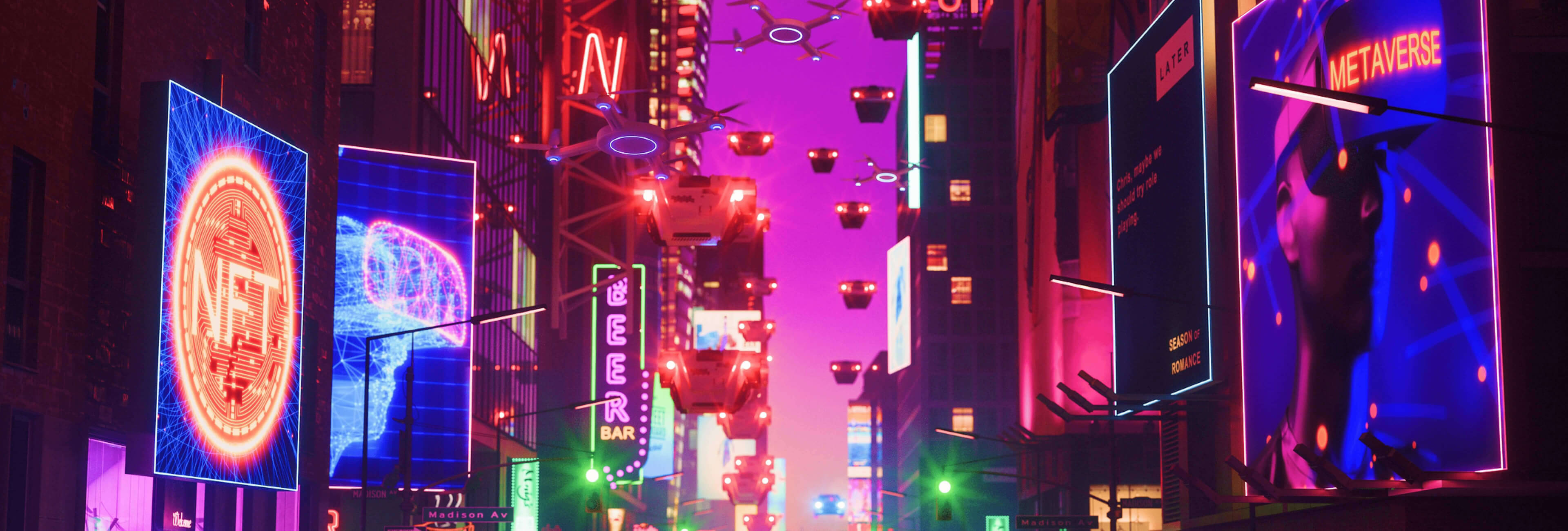Metaverse: brief overview
Let's first start with defining what the metaverse really is. This term refers to a virtual world or universe where individuals can engage with each other in real time. It is a shared space that combines virtual realities, offering users an array of experiences and diverse means of interaction. The vision for the metaverse is to create a shared online world accessible to anyone worldwide through various devices – enabling people to live, work, play and socialise.
Dzianis Aviaryanau, a Middle Experience Designer at ELEKS, has been following the metaverse's development closely and observed that it has failed in many ways. So, let's shift our focus to the factors contributing to these failures.
AI overshadowing the importance of UX
One significant challenge in the metaverse is the prevalence of AI. While AI technology has been crucial in metaverse development, it has simultaneously neglected the importance of good experience design. It has led to developers focusing too much on technical aspects of the metaverse - creating complex algorithms and designing intricate environments - rather than user experience, resulting in frustrating and confusing user flows.
Let's face the truth: it's not a novel issue. Meta - former Facebook - has had troubles with the interfaces and overly relied on its users' habits rather than easy-to-use user interfaces.
The thing is that users don't care much about technical aspects of the metaverse; their main priority is the intuitive and smooth experience that allows them to interact with others and engage meaningfully with the environment. Unfortunately, many metaverse experiences are too complex and challenging to navigate, with too many options and features that overwhelm users. The lack of intuitive navigation and utilisation of the metaverse can lead to user frustration and confusion.
User engagement hurdles
Another problem with metaspaces is that some developers create disjointed experiences without clear tasks and goals. It can have users wander aimlessly, confused and unsure what to do and how to engage with the metaverse. In this case, the strategic product design can have a significant impact. Developers can enhance user engagement and satisfaction by prioritising simplicity and user-centric design.
In addition, some metaverse experiences are troubled with tech issues, including lagging, crashing and slow loading time, which can hinder engagement and even drive the users away completely.
Technical and hardware strains
As we indicated above, technical issues are among the main metaverse problems. However, the reason behind the rise of such matters is the sheer amount of computing power that the metaverse requires.
The digital world provided by the metaverse is constantly transforming and evolving in real-time, creating large amounts of data. It requires significant processing capacity, which can overload the hardware. For instance, some metaspaces need high-end PCs or specialised equipment inaccessible to the broader audience.
Moreover, modern VR equipment doesn't provide a seamless user experience. It's either too heavy and wired but powerful enough or lightweight and wireless but laggy and weak. Nowadays, devices usually fall short of satisfying the wide-ranging and diverse needs of the target audience.
Challenges of metaverse algorithms
And one shortcoming of the metaverse is that some of its algorithms are ineffective or way too complex. For example, some user behaviour-tracking algorithms failed to obtain accurate results. Consequently, user engagement and satisfaction can drop due to irrelevant recommendations or a struggle to find relevant information.
Conclusions
So, with all these issues, is the metaverse doomed to fail? Not necessarily. While the experiment with user experience design for the metaverse must be improved, this technology still has potential.
Check our article from the R&D team, where we describe our own meta art gallery prototype, share our findings and possible use cases: Exploring the Potential of Metaverse With Our Meta Art Gallery Prototype
For example, AI could be used to improve the user experience in the metaverse by anticipating user behaviour and providing relevant recommendations. By analysing user data and patterns, AI could help designers create metaverse environments tailored to reach specific goals and fully satisfy their users' needs.
Some of the potential disadvantages that have been discussed regarding the metaverse include:
- Accessibility: The metaverse may require expensive hardware and high-speed internet connections.
- Privacy and security concerns: As with any other online platform, there is always a risk of data breaches and cyber-attacks.
- Ethical concerns: The metaverse raises ethical questions around issues such as ownership of virtual property and avatars and digital identity.
- Virtual harassment: Bullying in social media has been a long-standing issue, and the metaverse cannot guarantee its eradication.
The metaverse may not solve major issues, but it can aid in preventing social isolation. It holds the potential to diversify leisure activities by introducing new forms of entertainment and media consumption. Moreover, the metaverse opens new e-commerce opportunities, enabling businesses to connect with customers innovatively and generate additional revenue streams.
There are some people who believe that the metaverse is destined to fail. In 2022, it was reported by DappRadar that the virtual world Decentraland only had 38 "active daily" users, leading to doubts about its potential success. However, we cannot be so absolute in our judgement. As we stated in our article, while the user experience design for the metaverse needs improvement, there is still potential for it to succeed in the future.

